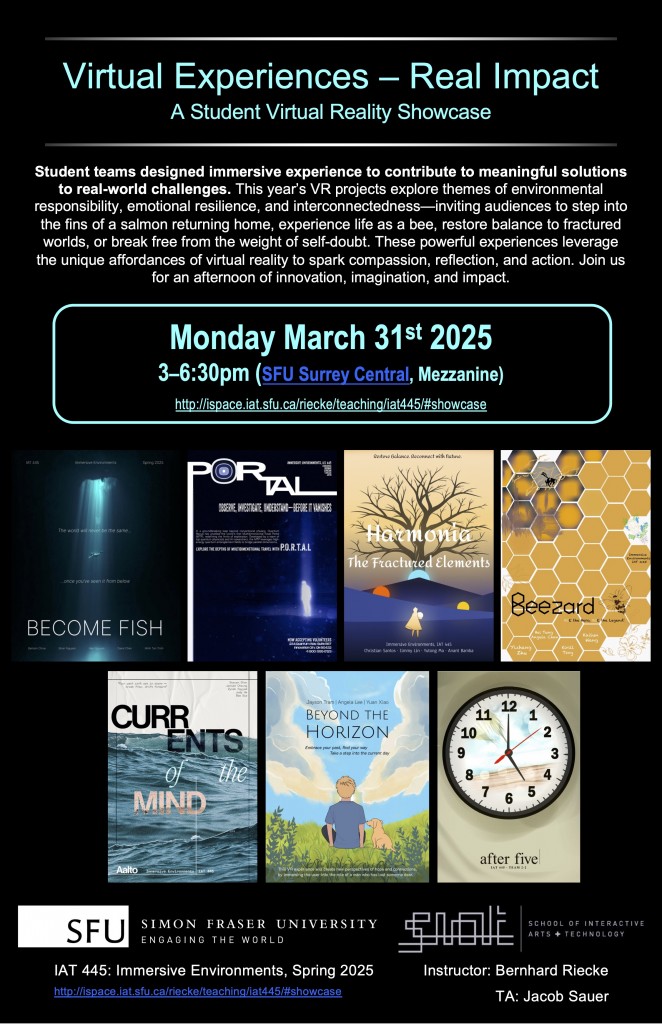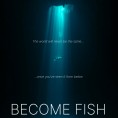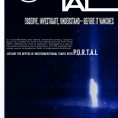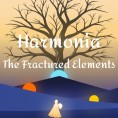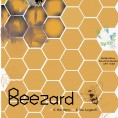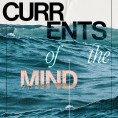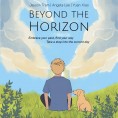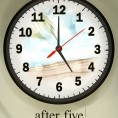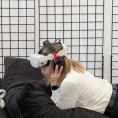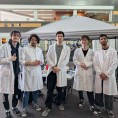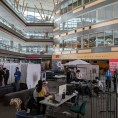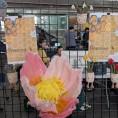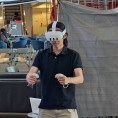Virtual Experiences - Real Impact:
VR4Good IAT 445 Project showcase, Monday March 31st 2025
On Monday March 31st 2025 from 3–6:30, the students from my course on “immersive environments” (IAT 445) will be presenting their final VR projects that they worked on for this semester, on the Mezzanine on our SFU Surrey campus.
The design challenge was Impact: Using immersive experience design to contribute to meaningful solutions to real-world challenges. That is: what is a topic that you (and your team) care very deeply about that would help create a better world? A topic you care about so deeply about that it might be worth making a purposeful/transformative immersive VR experience out of it?
This year’s VR projects explore themes of environmental responsibility, emotional resilience, and interconnectedness—inviting audiences to step into the fins of a salmon returning home, experience life as a bee, restore balance to fractured worlds, or break free from the weight of self-doubt. These powerful experiences leverage the unique affordances of virtual reality to spark compassion, reflection, and action. Join us for an afternoon of innovation, imagination, and impact.
Details about the VR Projects:
Become Fish
The world will never be the same… once you’ve seen it from below.
Razor: Our VR experience will have users embody a salmon, immersing them in the full life cycle, from pristine rivers to the vast ocean, only to return and witness the devastating impact of human-caused environmental change.
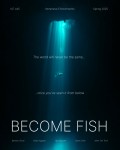 By becoming a fish and swimming through the ocean, this VR experience helps you feel what it’s like to live underwater as man-made interference changes your home for the worse. You will start in a beautiful, clean environment full of abundant flora and fauna, and then watch how pollution from humans makes it harder to navigate your living space and survival. By embodying a fish, you’ll understand why keeping our oceans clean matters for all life on Earth. When you take off the VR headset, hopefully you’ll never look at ocean pollution the same way again.
By becoming a fish and swimming through the ocean, this VR experience helps you feel what it’s like to live underwater as man-made interference changes your home for the worse. You will start in a beautiful, clean environment full of abundant flora and fauna, and then watch how pollution from humans makes it harder to navigate your living space and survival. By embodying a fish, you’ll understand why keeping our oceans clean matters for all life on Earth. When you take off the VR headset, hopefully you’ll never look at ocean pollution the same way again.
Project teaser video
https://www.youtube.com/watch?v=W3QBbhahmqM\
Final project video
P.O.R.T.A.L.
Un-abstracting your impact.
Razor: Our VR experience transports our user interdimensionally into the body of a lighthouse keeper, where they interact with a world where the smallest actions have the biggest consequences.
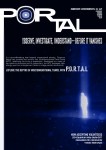 In our project, thanks to P.O.R.T.A.L’s (Perceptual Ocular Research Through Alternate Lifetimes) company research, there now exists the technology to link a user’s consciousness to another body on an alternate earth. In our experience, users will be linked to a lighthouse keeper on an alternate version of earth, where space-time is distorted and the smallest interactions have large consequences on the world around you. The old lighthouse is decorated with props and opportunities for interaction. As the player interacts with objects, each object seems to change the environment outside, for better, or for worse. With their limited time before their host expires, the user gets to bear witness to how this earth met it’s end, and provides P.O.R.T.A.L researchers with information on how we may avoid a similar fate.
In our project, thanks to P.O.R.T.A.L’s (Perceptual Ocular Research Through Alternate Lifetimes) company research, there now exists the technology to link a user’s consciousness to another body on an alternate earth. In our experience, users will be linked to a lighthouse keeper on an alternate version of earth, where space-time is distorted and the smallest interactions have large consequences on the world around you. The old lighthouse is decorated with props and opportunities for interaction. As the player interacts with objects, each object seems to change the environment outside, for better, or for worse. With their limited time before their host expires, the user gets to bear witness to how this earth met it’s end, and provides P.O.R.T.A.L researchers with information on how we may avoid a similar fate.
Final project video
Harmonia: The Fractured Elements
Shape the world, restore the balance—step into the realm of Harmonia
Razor: This is a VR journey where participants will learn the importance of balance in nature through abstract immersive exploration and interaction with elemental orbs.
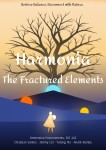 Embodying a traveling entity that explores elemental-themed villages in an attempt to find missing elemental orbs in order to restore harmony in a once barren land stricken by tragedies, through it understanding how the elements work together to keep balance and form our world. Discover clues by exploring the world around you and a whim of the world out of balance.
Embodying a traveling entity that explores elemental-themed villages in an attempt to find missing elemental orbs in order to restore harmony in a once barren land stricken by tragedies, through it understanding how the elements work together to keep balance and form our world. Discover clues by exploring the world around you and a whim of the world out of balance.
Project teaser video
Final project video
BeeZard - The Magic of Pollination
Bee the Change – Heal the Hive, Save the World!
Razor: Our VR experience will immerse players in a bee’s journey—from joyful exploration and hive-building to confronting pollution and making transformative choices to restore environmental balance—while keeping the narrative engaging and accessible
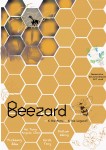 Step into the transformative world of BeeZard, a charming VR adventure where you become a bee navigating a vibrant, cartoon-style landscape. Begin by enjoying playful tasks like collecting nectar and building your hive, but soon face the challenge of rising pollution that sickens the bees—including your queen—forcing you to gather special nectars and diamonds to create healing honey, with your choices ultimately determining the fate of both your hive and the nearby factory workers.
Step into the transformative world of BeeZard, a charming VR adventure where you become a bee navigating a vibrant, cartoon-style landscape. Begin by enjoying playful tasks like collecting nectar and building your hive, but soon face the challenge of rising pollution that sickens the bees—including your queen—forcing you to gather special nectars and diamonds to create healing honey, with your choices ultimately determining the fate of both your hive and the nearby factory workers.
Project teaser video
Final project video
Currents of the Mind
Your path isn’t set in stone —break free, drift forward
Razor: We will create a VR simulation set underwater, where users are trapped in a glass house that represents their limited beliefs about themselves. As they challenge their self-doubt, they will break free from these mental barriers.
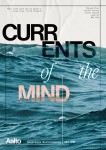 Drift through a world shaped by your emotions in Currents of the Mind, a VR experience designed to help break free from the belief that you aren’t talented enough to achieve your dreams and overcome the fear of taking that first step. Trapped in a glass house underwater, your self-doubt holds you back as the currents push and pull. As players progress and gain confidence, the players must break through the glass walls, which is a physical representation of their self-doubt. This action symbolizes their ability to confront their own insecurities. As the glass shatters, the players would be allowed to explore the environment more freely and experience a newfound sense of control. The walls begin to crack, and the weight of uncertainty drifts away. This is more than a journey—it’s a space to breathe, let go, and rediscover your true capabilities. We were inspired by the psychological effects of imposter syndrome, specifically how it could hinder personal growth and success. We were also inspired by how VR has been previously used as a tool for cognitive therapy and its potential in addressing mental health challenges.
Drift through a world shaped by your emotions in Currents of the Mind, a VR experience designed to help break free from the belief that you aren’t talented enough to achieve your dreams and overcome the fear of taking that first step. Trapped in a glass house underwater, your self-doubt holds you back as the currents push and pull. As players progress and gain confidence, the players must break through the glass walls, which is a physical representation of their self-doubt. This action symbolizes their ability to confront their own insecurities. As the glass shatters, the players would be allowed to explore the environment more freely and experience a newfound sense of control. The walls begin to crack, and the weight of uncertainty drifts away. This is more than a journey—it’s a space to breathe, let go, and rediscover your true capabilities. We were inspired by the psychological effects of imposter syndrome, specifically how it could hinder personal growth and success. We were also inspired by how VR has been previously used as a tool for cognitive therapy and its potential in addressing mental health challenges.
Project teaser video
Final project video
Beyond the Horizon
Embrace your past, find your way - take a step into the current day.
Razor: Our VR experience will create new perspectives of hope and connections, by immersing the user into the role of a man who has lost someone dear.
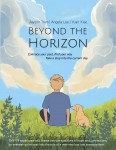 Step into a deeply immersive VR narrative in Beyond the Horizon, where every choice and interaction shapes a personal journey of loss, connection, and healing. After a tragic accident that takes the life of his best friend, the protagonist falls into grief and isolation. One day, he receives a phone call from his mother—not a direct order, but a gentle nudge, a reminder that life still moves forward. Encouraged by her words, he steps outside for the first time in weeks, and he goes to an animal shelter or street, where he meets a dog that changes everything.
Step into a deeply immersive VR narrative in Beyond the Horizon, where every choice and interaction shapes a personal journey of loss, connection, and healing. After a tragic accident that takes the life of his best friend, the protagonist falls into grief and isolation. One day, he receives a phone call from his mother—not a direct order, but a gentle nudge, a reminder that life still moves forward. Encouraged by her words, he steps outside for the first time in weeks, and he goes to an animal shelter or street, where he meets a dog that changes everything.
Through interactive storytelling, gaze-based mechanics, and dynamic environmental changes, players will forge an emotional bond with their new companion. Beyond the Horizon is not just a story—it is an embodied experience of resilience and love, culminating in a powerful transformation as the protagonist finds the strength to move forward, learning that healing often comes in unexpected forms.
Project teaser video
Final project video
After 5
Do you truly understand the value of your time?
Razor: Our VR experience will immerse players in the quiet struggle of an overworked employee, using dreamlike escapes to explore themes of burnout, emotional release, and the longing for freedom
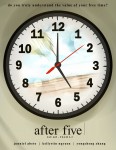 After 5 is a VR narrative experience that contrasts the dull repetition of office life with the vivid freedom of long-forgotten dreams. Players step into the shoes of Owen, an overworked employee trapped in a routine of endless CAPTCHAs and thankless demands. As each workday ends, Owen drifts into increasingly surreal dreams—a sunny beach, questioning whether his time in the office is worth it by the second time the dream happens. These dreamscapes work like an escape and also a signifier for questioning the character and the player whether their time is spent on the things that they like to do. We try to give the player more action on the beach scene to find out what they like to do going from swimming and riding on a boat
After 5 is a VR narrative experience that contrasts the dull repetition of office life with the vivid freedom of long-forgotten dreams. Players step into the shoes of Owen, an overworked employee trapped in a routine of endless CAPTCHAs and thankless demands. As each workday ends, Owen drifts into increasingly surreal dreams—a sunny beach, questioning whether his time in the office is worth it by the second time the dream happens. These dreamscapes work like an escape and also a signifier for questioning the character and the player whether their time is spent on the things that they like to do. We try to give the player more action on the beach scene to find out what they like to do going from swimming and riding on a boat
Project teaser video
Final project video
Project Posters
Showase Impressions
Course Description
Want to work with the latest in immersive technology such as head-mounted displays (HMDs)? IAT445 is an interactive and project-focused course where you’ll design, create, and refine a deeply engaging experience that you will present in a final showcase to the public (often including guests from the virtual reality (VR)/gaming industry). In this course, we will use an immersion framework to design, create, and evaluate immersive virtual environments and the interaction between the user and the virtual environment. To do this, we will combine hands-on fundamentals with interaction, animation, immersive virtual reality design, and theoretical and research concerns. The project will serve to both motivate and implement/showcase these aspects. The course will culminate in a final interactive project showcase and project pitch (oral/video) of the team project..
What’s in it for you?
You will learn how to design, build, and iteratively refine an immersive and interactive VR experience that should blow the user away and positively affect them in a meaningful way. To do this, you will use the popular Unity 3D game engine and guidance from immersion, presence, and transformative experince design frameworks. You will most likely be implementing this for head-mounted displays so you’ll be able to showcase it wherever you go – including your next job interview or your next party. Combining a public project showcase with a project website, an executive summary, and a final project video can further improve your resume/portfolio and marketability.
see SFU’s Teaching & Learning blog for a news story on my first offering of this course in 2013, entitled: “How a SIAT course in immersive environments exposed students to the real world”
Design challenge
This semester’s design challenge for IAT445 is Impact: Using immersive experience design to contribute to meaningful solutions to real-world challenges. That is: what is a topic that you (and your team) care very deeply about that would help create a better world? A topic you care about so deeply about that it might be worth making a purposeful/transformative immersive VR experience out of it?
Specifically, you will work in a team and use Unity and the guiding frameworks from this course (e.g., immersion, presence, user-centered systems design, agile development, transformative experience design etc.) to iteratively ideate, design, prototype, and evaluate an immersive interactive VR experience that takes advantage of the unique affordances and capabilities of immersive VR experiences. You will design for user experiences that have the potential to positively impact users’ emotions, cognition/perspective and/or behavior that would otherwise be impossible (or not as easily accessible) to most people. How can you provide interesting, inspiring, or meaningful VR experiences that create a positive change in the user? That is, what experiences can you provide in VR that are otherwise difficult, dangerous, or hard to experience? Instead of using VR as a diversion and ultimate sensory overload tool to wow people, think of ways you can use it for something more interesting, novel, exciting, and meaningful. How will you go beyond traditional digital experiences and take advantage of the potential of immersive technologies/VR?
Resources on Unity & VR
if you don’t have a strong background in programming or VR development already, I’d suggest to go through some basic Unity tutorials. It’ll be useful to have at least a basic understanding of these areas for the course projects. Prior students have found the following tutorials quite useful:
- https://learn.unity.com/pathway/unity-essentials - lots of basic skills, pick and try out at least the basics until you can create basic VR/XR projects
- https://learn.unity.com/pathway/vr-development - probably the most relevant once you are comfortable w/ basic Unity things [optional if you’d like to go deeper]
Examples of prior students' VR/XR projects from Bernhard's classes:
Undergrad classes
Grad/mixed:
- IAT 848 Mediated, Virtual, and Augmented Reality, Fall 2024
- UBISS Summerschool 2024 1-week intensive VR Workshop/Jam “Virtually Real? The Art and Science of Designing Impactful (or Even Transformative?) Virtual Experiences”
Spring 2025 offering (in-person)
Virtual Experiences - Real Impact: VR4Good IAT 445 Project showcase, Monday March 31st 2025, 3-6:30pm
on Monday March 31st, the students from my course on “immersive environments” (IAT 445) will be presenting their final VR projects that they worked on for this semester.The topic was Impact: Using immersive experience design to contribute to meaningful solutions to real-world challenges. That is: what is a topic that you (and your team) care very deeply about that would help create a better world? A topic you care about so deeply about that it might be worth making a purposeful/transformative immersive VR experience out of it?
details will follow
Team websites:
Documentation from earlier course offerings and showcases
(first taught in Spring 2013)
Project videos from current and prior IAT 445 course offerings: see our youtube playlist
Course Objectives, Learning Goals & Desired Learning Outcomes (DLO's)
Course Goal: By the end of this course, you will gain the knowledge, skills, and confidence to design and develop impactful and ethical VR experiences. You’ll learn to prioritize the user’s needs and perspectives while considering the broader societal implications of immersive technologies. Through hands-on projects, collaborative teamwork, and critical reflection, you’ll be empowered to create VR experiences that not only engage and entertain but also contribute to a more informed, empathetic, and responsible future.
Desired learning outcomes (DLO’s):
1. Foundational VR Knowledge and Skills
- Understanding: Grasp the core concepts and terminology of VR technology (hardware, software, design principles), as well as relevant theories and frameworks for understanding user experience and immersive media, through hands-on experience and guided discussions.
- Application: Apply foundational knowledge (including relevant theories and frameworks) to analyze existing VR experiences and identify strengths, weaknesses, and areas for improvement.
- Technical Skills: Gain proficiency in using Unity as a tool for VR development, including basic interaction design, animation, and prototyping.
- VR Design Principles: Understand and apply fundamental VR design principles, such as immersion, presence, interaction design, and user comfort, to create effective and engaging VR experiences.
2. Human-Centered VR Design
- User Experience (UX): Design VR experiences that prioritize the desired user experience and user’s needs and preferences, considering factors such as usability, accessibility, and emotional impact.
- Immersion and Presence: Explore design strategies for creating immersive and compelling VR experiences that evoke a sense of presence and engagement in users.
- User Comfort: Understand and address factors that affect user comfort in VR, such as cybersickness and other potential adverse effects of VR..
- Ethical Considerations: Consider the ethical implications of VR design choices, including potential biases, privacy concerns, and the responsible use of immersive technology.
3. Designing for Impactful Experiences:
- Transformative Design: Understand the framework of transformative experience design and apply it to the creation of meaningful VR experiences that leave a lasting impact.
- Ethical Considerations: Consider the ethical implications of designing immersive experiences, especially those dealing with sensitive topics, and develop strategies for responsible VR creation.
- Storytelling in VR/XR: Explore how to leverage VR’s unique capabilities to tell compelling stories and create emotionally resonant experiences that support desired UX, goals, and impact.
4. Collaborative Project Development and Community Building:
- Agile Methodology: Learn and apply an agile development process to create VR prototypes, incorporating iterative feedback and testing.
- Teamwork: Develop effective communication and collaboration skills within a team setting to successfully design and implement a VR/XR project.
- Feedback: Give and receive constructive feedback to refine both individual and team contributions.
- Community Building: Utilize tools and techniques to foster a supportive learning environment within the larger class community, promoting effective learning, growth, reflection, and collaboration.
5. Critical Reflection and Self-Assessment:
- Metacognition: Reflect on your personal learning journey, identifying strengths and areas for further development.
- Articulation: Clearly communicate design choices, rationale, and reflections through both written and verbal communication.
- Continuous Learning: Develop a mindset of continuous learning and improvement in the ever-evolving field of VR/XR.
What projects are feasible? While students have considerable freedom in choosing their team projects, there are a few guidelines and restrictions
- They have to be interactive (including meaningul user interaction and/or user locomotion, and potential animations), immersive, and 3D. That is, you will design and build a 3D virtual experience in Unity and display it immersively, e.g., using the provided head-mounted display you will be able to check out from the Surrey library. It should not induce negative side effects such as cybersickness.
- No killing/torture/violent/combat games or pornography. Such topics are already overdone, and our goal is to encourage and incentivize innovation and exploration of new ideas. Student teams are encouraged to push the medium and challenge viewers to rethink common theoretical, technical or cultural assumptions.
- Address this semester’s Design Challenge (announced and discussed at the beginning of the course).
